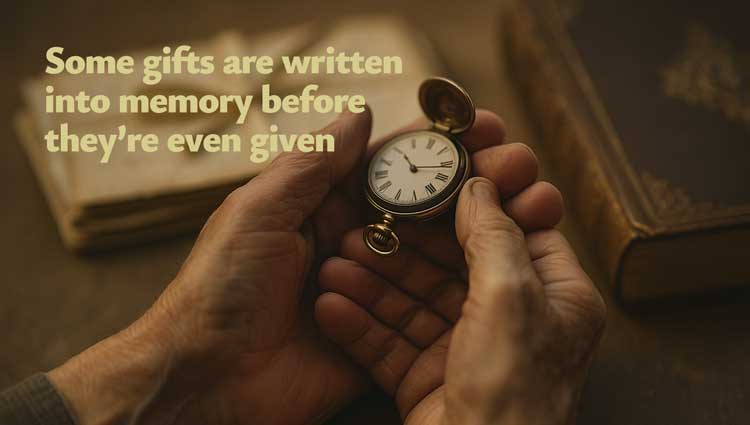And Why Smart Funders Expect You to Have a Program
Funders take you seriously when you take yourself seriously. And nothing signals long-term commitment more clearly than having a strong planned giving program in place.
Today’s funders, foundations, major donors, and public grantmakers (including government agencies) aren’t swayed by passion alone—they’re looking for proof that you’re built to last.
Proof that your nonprofit is built to last. That you’re not just chasing this year’s budget, in a panic mode, but planning for the next decade.
Planned giving is that proof.
It sends a clear message:
“We’re not just fundraising—we’re building a future.”
By offering planned giving options, your organization signals:
- Maturity – You’re thinking beyond events and fiscal years.
- Stability – You’re creating revenue that supports long-term impact.
- Responsibility – You’re not relying on emergency grants to survive.
- Vision – You help donors create legacies, not just gifts.
What Funders See: Serious vs. Short-Term Thinking
| Reactive Nonprofit | Legacy-Building Nonprofit |
|---|---|
| Focuses on short-term donations | Offers legacy giving options and long-term planning |
| Relies on events and appeals | Builds endowments and future revenue streams |
| Has no planned giving program | Promotes bequests, DAFs, and other legacy tools |
| Operates year-to-year | Thinks in decades—plans for generational impact |
| Dependent on shrinking government support | Builds donor-driven, independent financial sustainability |
Funders don’t just look at your programs. They look at your plan. Planned giving proves you have one.
Dr. Scott Janney, The Salvation Army Tweet
Planned giving doesn’t just bring in legacy gifts—it positions you as a legacy-worthy organization.
Wayne Olson, Esq. Tweet
A Historic Window of Opportunity
We are in the midst of the largest wealth transfer in history.
Between $68 trillion and $84 trillion is expected to shift hands over the next 20 years. Much of this wealth is going to be given away—and nonprofits that prepare now will benefit for decades.
Donors are actively looking for ways to leave a legacy—but only organizations with a clear planned giving path will make it into their wills.
Why Planned Giving Matters More Than Ever
1. Funders Are Watching
Having a planned giving program tells foundations you’re responsible and built to last. They want to fund nonprofits that think long-term—not those constantly playing catch-up.
2. Government Support Is Shrinking for Good
From education to the arts to social services, federal and state support is drying up. Nonprofits need new revenue models. Planned giving is one of the most effective, lowest-cost ways to build financial independence.
3. Donors Are Thinking About Legacy
Post-pandemic life has changed how people view wealth and purpose. Donors are writing wills, updating estate plans, and actively looking for ways to leave a mark. If you’re not in their plans, someone else will be.
4. Recession-Proof Revenue
Bequests and planned gifts offer predictable, stable income—even during downturns. Unlike annual appeals or gala events, legacy gifts are unaffected by short-term market changes.
5. Extraordinary Return on Investment
Planned gifts often range from 5x to 100x larger than standard gifts. And yet, they cost far less to promote than other fundraising channels. The ROI is unbeatable.
6. Deeper Donor Loyalty
Planned giving leads to conversations about purpose, values, and vision. These aren’t transactional—they’re transformational. Donors who leave a legacy gift become lifetime ambassadors.
The Bottom Line: Planned Giving Proves You’re Permanent
Planned giving isn’t just about future money—it’s about present-day positioning. It proves to donors and funders alike that your organization:
-
Has vision
-
Has a future
-
And plans to be around for generations to come
In short: you’re not just asking for help—you’re offering legacy.
How to Get Help
If you’re exploring how to build or strengthen your legacy efforts, PlannedGiving.com has helped over 5,000 nonprofits do just that. Our tools are simple, scalable, and designed with both fundraisers and donors in mind.
- Fully built, branded legacy websites
- Messaging and materials aligned with donor mindsets
- Planning tools that let supporters take action at their own pace
- Affordable options for smaller nonprofits with limited resources
No tech skills required. No large team needed. Just a willingness to invest in the future.
Final Word
This is not business as usual. We are witnessing a convergence of:
Historic wealth transfer
Permanent public funding cuts
Donor readiness like never before
If you wait, you’re invisible. If you act, you’re unforgettable.
Let us help you start or strengthen your planned giving program—before your donors plan their legacy without you.
Visit PlannedGiving.com to learn more.
This moment comes with a warning: Those who wait, lose.
Viken Mikaelian, CEO, PlannedGiving.com Tweet






